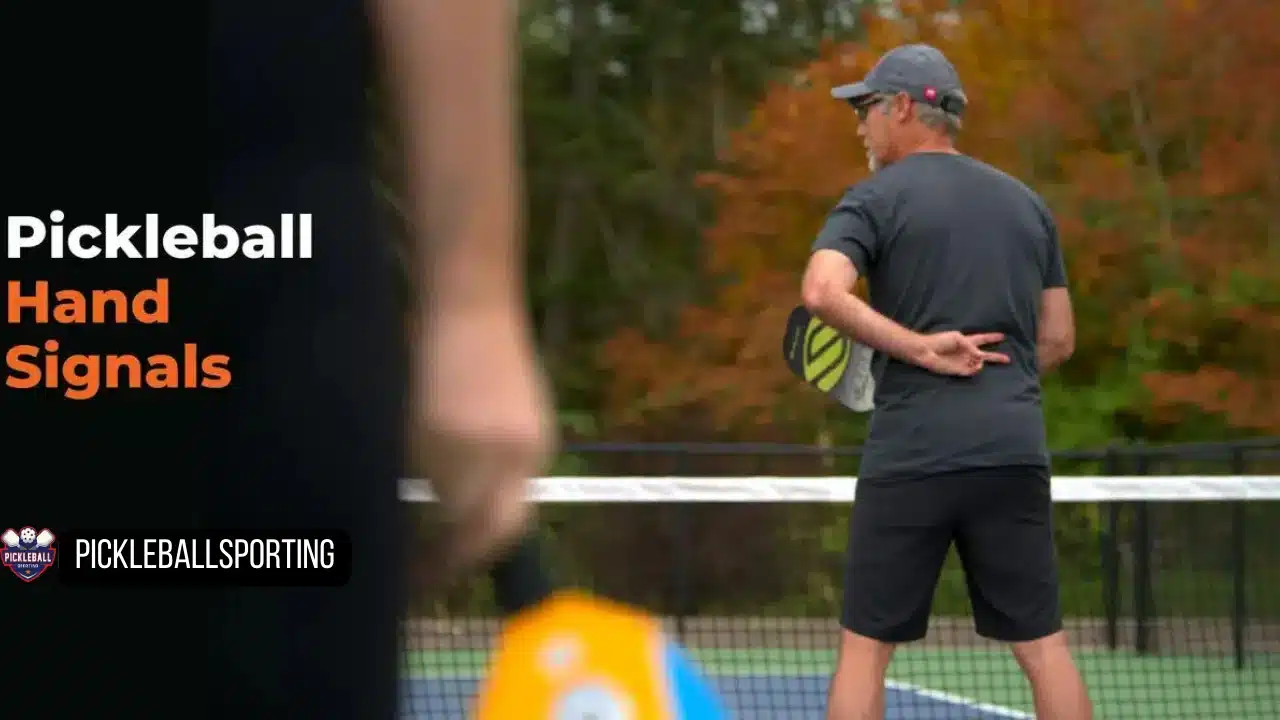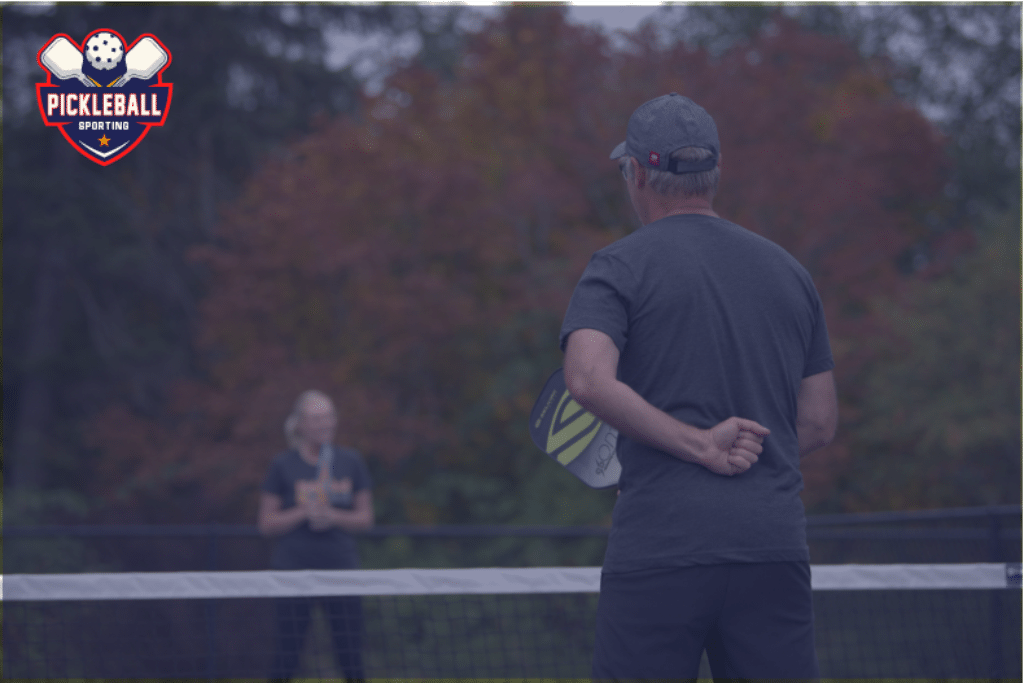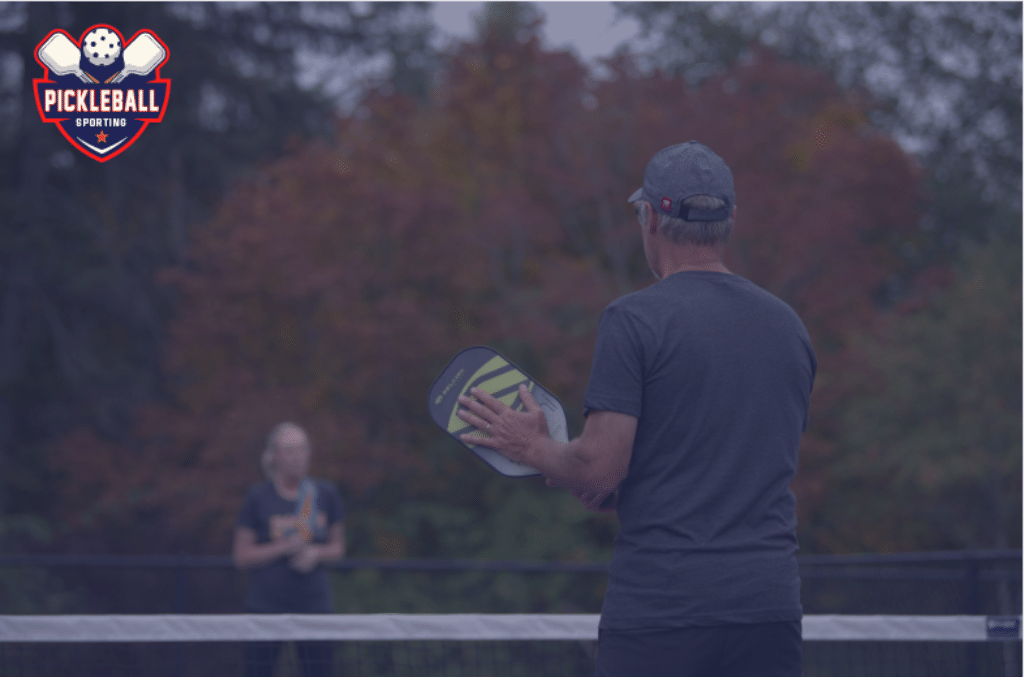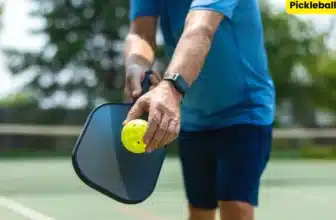
Are you new to pickleball? You may have come across pickleball players giving signals to one another. Have you ever wondered what those hand gestures are? These strange pickleball hand signals often confuse a player who has just started playing pickleball.
If you would like to become a master in these pickleball hand signals like a pro, this guide is just perfect for you!
What Is the Use of Pickleball Hand Signals?
Before jumping right onto what hand signals are, why not understand the purpose of using such signals?
Here are a few basic points about pickleball hand signals you might want to consider remembering:
- In pickleball, hand signals make the game better by using strengths, talking better, and surprising opponents.
- When playing in pairs, signals are used, especially during “stacking,” to put a player on a side, no matter who’s serving.
- Stacking is done to have good forehand positions, use strengths, and take advantage of opponents’ weaknesses.
- Pickleball signals happen behind the back or paddle of the partner not returning serve, showing where they’ll stand after the serve.
- Players use signals to talk about changing positions before each serve return.
- Signals help the non-returning player know where the serve will go, so they can get ready for the next shot.
- For example, if a partner signals to switch, the return is likely to go straight to avoid a hard shot for the switching player.
What are Pickleball Hand Signals?

The two most common hand signals you will come across in a pickleball court are
- A flat open hand (meaning switch)
- A closed fist (meaning stay)
In addition to these two signals, you may also come across another signal, with the index and middle finger spread in a V-shape (meaning fake).
Who makes these signals? Well, these signals are made by the partner who stands just behind the kitchen, also known as the non volley zone of the court, meanwhile, their partner is standing at the baseline of the court getting ready to return to their opponents’ serve.
Understanding “Switch”

Spreading your fingers wide is like saying “let’s switch” in pickleball. This tells your partner, getting ready to return the serve, that you plan to move to the other side of the court either right after or as soon as they hit the serve back. When you signal to switch, it’s like giving your partner a heads-up to hustle over to the other side after returning the serve.
Switching like this has its perks. Firstly, it’s smart if it means putting the player with the stronger forehand where their forehand will be dead center. Plus, it adds a dash of surprise. The opponent hitting the third shot suddenly has to decide on the spot where to hit the ball. If they were aiming for a specific player, and you have switched places last minute, it can mess up their timing and result in a less powerful third shot.
Understanding Signal Stay:

Closing your hand into a fist is like saying “stay put” in pickleball. It’s a signal to the player gearing up to return serve that their net-side partner plans to stay on the same side and won’t be switching. This way, the player returning the serve understands they should stay on their side and not switch positions.
You must keep the hand in a fist, which means maintaining the current setup. Your partner at the net is sticking to their spot. So, if you see the closed fist signal, you know it’s a “stay” message, and there’s no need to trade places after returning the serve. It adds a layer of strategy, helping players coordinate their movements and maintain a steady game plan.
Understanding “Fake”:

Some players throw in a little trick with a signal to “fake” in pickleball. It is like pretending to switch sides but swiftly returning to where players started. Now you may think, what the purpose of this fake move is. Well, this fake move aims to confuse opponents. They see the motion and expect a switch, so they plan their next shot accordingly. Yet, when the player who faked it zips back to their initial side at the last second, it messes up the opponent’s plan for the third shot.
Pros usually skip the fake signal. They naturally move in ways that might suggest a switch but trust their partner to know when it’s real. The fake signal is more common among intermediate players who might not have the same confidence or ability to predict their partner’s moves. It adds a playful element to the game and keeps opponents on their toes.
Can You Switch Hands in Pickleball?
Many pickleball players often wonder if they can switch hands during the game. The short answer is “yes,” but there’s more to it. It’s totally legal to switch hands in pickleball, even in the middle of a game. However, not many players, whether recreational or pros, actually try it.
Let’s learn a few basics to switching hands in Pickleball:
- Switching hands in pickleball is legal and can be done during a game.
- Professional players rarely switch hands, but some, like Wes Gabrielsen, have mastered it.
- Ambidextrous (able to use the right and left hands equally well) players find it easier to switch hands in pickleball.
- Switching hands can be beneficial for players coming from sports where hand-switching is common.
- It can also be helpful for players with mobility issues or injuries limiting one hand’s range of shots.
- Advantages of switching hands include increased reach, covering a weak backhand, requiring less mobility, and confusing opponents.
- However, there are downsides such as dropped paddles, masking weak backhands, lazy footwork, and confusion with doubles partners.
Can You Hit a Pickleball with Your Hand?

You will feel wondering if you can hit a pickleball with your hand. Well, the answer to this question is simple and complex. Simply put, no.
But there’s a slight ambiguity related to this. When someone talks about hitting a pickleball with the hand, they might be discussing the rule regarding the ball making contact with the body. Whether you can legally return a pickleball after it hits you depends on the specific location of the contact.
Concluding Thoughts
So there you have a comprehensive guide to understanding the basics of pickleball hand signals in the form of this article. Whether you are a newcomer to the pickleball court or someone curious about those hand gestures, this guide has you covered.
From the purpose of using hand signals to the complications and understanding of “switch,” “stay,” and even the playful “fake,” we have explored the world of communication on the pickleball court.
Whether you are looking to up your pickleball game, surprise your opponents with a switch, or simply understand the ins and outs of hand signals, this guide has provided insights and tips to elevate your pickleball experience. So, grab your paddle, hit the court, and have a smashing time.
FAQs
Can I use both hands in pickleball?
In a fast-paced kitchen line showdown, when the ball comes to your not-so-favored shoulder, going for the two-handed backhand is a smart move. It packs more punch, giving you a better shot at scoring the point compared to a single-handed counter.
Can you double touch in pickleball?
There’s this rule about double hits. It goes like this, “You can hit the ball twice, but it has to be an unintentional, non-stop swing in one direction by one player.” The good news? You can go for it in regular, unintentional situations.
Can you flick your wrist in pickleball?
Absolutely, you can add a wrist flick to your pickleball game! It’s a handy technique for adding some finesse to your shots and maintaining control. Just make sure it’s integrated smoothly into your overall play.






